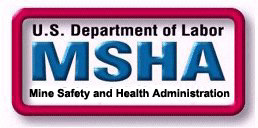A fatal accident occurred taking the life of a switchman when the locomotive operator pushed an eight-car trip into a siding. The switchman had been dropped off at the switch and the trip was pulled past the switch. He then signaled the locomotive operator to push the trip into the siding. When the locomotive operator cleared the switch, the switchman was nowhere in sight. After calling the dispatcher to report the trip in the clear, he proceeded to push the trip into the siding. When he felt resistance, he stopped the locomotive and walked to the front of the trip and found the lead car derailed and the switchman pinned underneath. There was no conclusive evidence found to explain how or why the switchman had traveled to the front of the trip, but by placing himself out of communication with the locomotive operator, he placed himself in danger.
A partial solution to the hazard is to place signal lights in the line of sight of the operator that can communicate by color or code, the basic go, slow, stop signals. In this diagram the colors are used. The redundant light bulbs can greatly reduce erroneous communication in case of a burned-out bulb. The self centering, spring returned switches ensure that the operator knows that the switchman is in the proper location.
When the track entry is not straight, more than one of the signal lights, electrically linked, may need to be used to ensure that the operator has the signal in his line of sight at all times.
MSHA does not condone riding on cars, especially on the couplers or bumpers. If it is absolutely necessary and there is no safe seating in the cab or operators deck for a passenger, it should be done by:
- Riding inside of the car, preferably one close enough to be in sight of the locomotive operator.
- Limiting the length of the ride to the length of the trip.
- Riding in cars that are being pulled rather than pushed down the track.
- Riding in cars that are equipped with ladders or steps for climbing into the car.
| Reissued: |
04/30/2002 |
| Tag # |
AP2002-S033
| |


